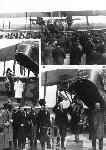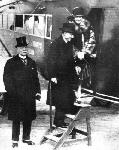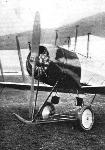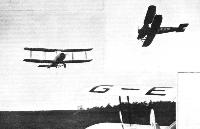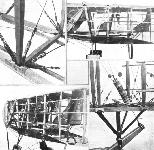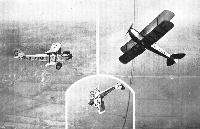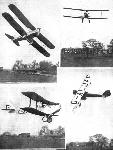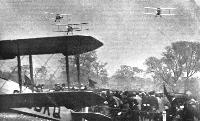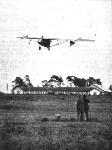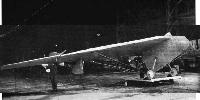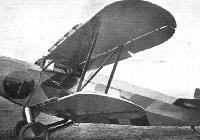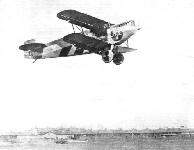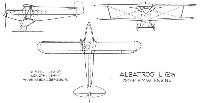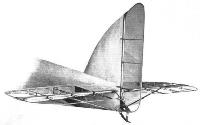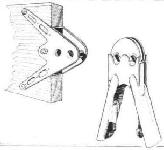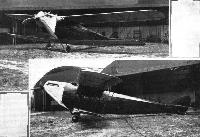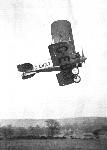Фотографии
-
CHRISTENING NEW MACHINES FOR IMPERIAL AIRWAYS: The upper photograph shows the crowd inspecting one of the Handley Page W.10's. In the inset Lady Maud Hoare is seen performing the christening ceremony by "unveiling" the name plate of one of the machines, and the lower photograph shows the giving of a hearty cheer for Lady Maud Hoare, the group including Lieut.-Col. Barrett-Lennard, Sir S. Instone Mr. Hubert Scott Paine, Air Vice-Marshal Sir Vyell Vyvyan, Sir S. Hoare, Mr. Larkin, Lady Maud Hoare, and Sir Eric Geddes.
Самолёты на фотографии: Handley Page H.P.18 (W.8) / H.P.30 (W.10) - Великобритания - 1919
-
PROMINENT PERSONALITIES AT CROYDON: The photograph shows Mr. Larkin, High Commissioner for Canada, Sir S. Hoare and Lady Maud Hoare emplaning in a Handley Page W.10.
Самолёты на фотографии: Handley Page H.P.18 (W.8) / H.P.30 (W.10) - Великобритания - 1919
-
Регистрационный номер: G-EBMM NEW MACHINES FOR IMPERIAL AIRWAYS: Last week a batch of Handley Page machines of the W.10 type, each fitted with two Napier "Lion" engines, were delivered to Imperial Airways at Croydon, the event being the occasion of a visit to the aerodrome by a number of prominent people. Our photograph shows the machines lined up for inspection.
Самолёты на фотографии: Handley Page H.P.18 (W.8) / H.P.30 (W.10) - Великобритания - 1919
-
Регистрационный номер: G-EBNE [4] THE AVRO 504 R "GOSPORT": Side view of the new Avro training machine.
Самолёты на фотографии: Avro Avro 504 - Великобритания - 1913
-
Регистрационный номер: G-EBNE [4] THE AVRO 504 R "GOSPORT." - Three quarter front view of the new training machine produced by A. V. Roe & Co., Ltd.
Самолёты на фотографии: Avro Avro 504 - Великобритания - 1913
-
Регистрационный номер: G-EBNE [4] THE AVRO 504R "GOSPORT": A close-up showing the familiar Avro hanging gear and the 100 h.p. Gnome Monosoupape.
Самолёты на фотографии: Avro Avro 504 - Великобритания - 1913
-
Регистрационный номер: G-EBNE [4] L.A.C.'s NEW MOUNT: Bert Hinkler flying the Avro "Gosport," which was presented to the L.A.C. by A. V. Roe and Co., at Woodford.
Самолёты на фотографии: Avro Avro 504 - Великобритания - 1913
-
Регистрационный номер: G-EBNF L.A.C.'s NEW MOUNT: The Avro "Gosport," presented to the L.A.C. by A. V. Roe and Co., with Bert Hinkler in the pilot's seat and Mr. Leeming (L.A.C. Chairman) as the "victim." Inset, the Chairman holding on to his seat.
Самолёты на фотографии: Avro Avro 504 - Великобритания - 1913
-
ALL BRITISH FOR ARGENTINA: A group of Avro type 504K biplanes, fitted with 100 h.p. Bristol "Lucifer" engines, which have been supplied, through the agency of Vickers, Ltd., by A.D.C. Aircraft, Ltd., to the Argentine Government.
Самолёты на фотографии: Avro Avro 504 - Великобритания - 1913
-
THE AVRO 504 R "GOSPORT": Some constructional details of the fuselage.
Самолёты на фотографии: Avro Avro 504 - Великобритания - 1913
-
THE ORIGINAL AVRO 504: This three-quarter front view of the machine produced in 1913 shows how this famous type has retained its main external characteristics right up to the present day.
Самолёты на фотографии: Avro Avro 504 - Великобритания - 1913
-
"QUANTAS": A D.H. 50 employed for air mail and passenger service by the Queensland and Northern Territory Aerial Services, Ltd., between Charleville and Camooweal, Queensland. Our illustration shows mail and passengers on their arrival at Longreach from Charleville.
Самолёты на фотографии: De Havilland D.H.50 - Великобритания - 1923
-
D.H.50 AS A SEAPLANE: This front view shows the clean lines of the machine.
Самолёты на фотографии: De Havilland D.H.50 - Великобритания - 1923
-
CLEAN RUNNING: Two views of the D.H.50, fitted with floats, which has been built for Lord Stonehaven, Governor-General of Australia. The absence of spray is most noticeable, and the machine appears to have no tendency to porpoise.
Самолёты на фотографии: De Havilland D.H.50 - Великобритания - 1923
-
THE FLY-PAST: The D.H.50 passing the Rochester works of Short Brothers, piloted by Capt. Broad.
Самолёты на фотографии: De Havilland D.H.50 - Великобритания - 1923
-
LORD STONEHAVEN'S D.H.50: Side View.
Самолёты на фотографии: De Havilland D.H.50 - Великобритания - 1923
-
Three-quarter front view of the D.H.50 fitted with floats built by Short Brothers, a portion of whose works may be seen in the background.
Самолёты на фотографии: De Havilland D.H.50 - Великобритания - 1923
-
Hot or cold! The extraordinary success with which the Armstrong-Siddeley "Jaguar" air-cooled engine functioned at temperatures in the neighbourhood of 110°F. during Cobham's recent London - Cape Town flight is still fresh in everyone's mind. The accompanying illustration is therefore particularly interesting inasmuch as it shows that this remarkable engine is equally at home at the other extreme. It depicts an "A.-W. Siskin" on which Lieut. Luneberg, of the Swedish Flying Corps, made a successful test in the far north of Sweden, with a temperature below 60 of frost, and then made a flight of 800 miles to the south of Sweden.
Самолёты на фотографии: Armstrong Whitworth Siskin - Великобритания - 1921
-
Регистрационный номер: G-AUAF [2] "AEROBATICS": The De Havilland "Moth," of which several are on order for Australia, is built with high load factors and holds an "aerobatics" airworthiness certificate. In these three views, taken from another De Havilland machine, the "Moth," is shown doing a roll, the left-hand photograph showing the machine just about to commence a roll, the right-hand picture illustrating the early part of the roll, and the inset showing the machine on its back, with the ailerons still hard over.
Самолёты на фотографии: De Havilland Moth / D.H.60 - Великобритания - 1925
-
Регистрационный номер: G-AUAF [2] These four photographs show one of the D.H. "Moths" on order for Australia being put through its paces by Capt. Hubert Broad. The views are such as to illustrate practically all the features of the machine, and incidentally they demonstrate the way in which pilots show their faith in the "Moth" and its "Cirrus" engine by "evoluting" close to the ground.
Самолёты на фотографии: De Havilland Moth / D.H.60 - Великобритания - 1925
-
FLYING AT MANCHESTER: Formation flying by three D.H. "Moths" at the L.A.C. Flying Meeting.
Самолёты на фотографии: De Havilland Moth / D.H.60 - Великобритания - 1925
-
Регистрационный номер: G-EBMO FLYING AT MANCHESTER: Bombing the Arab Fort at the L.A.C. Display; left, a "Moth" makes a machine-gun attack: right, the Arab "scouts" during a lull in the attack.
Самолёты на фотографии: De Havilland Moth / D.H.60 - Великобритания - 1925
-
COMING IN TO LAND: The Hill "Pterodactyl" is seen in this view in a fairly normal attitude. Note that the "controllers" are trailing, i.e., are lying along wind, and form an angle with the main wing.
Самолёты на фотографии: Westland-Hill Pterodactyl - Великобритания - 1925
-
THE TAILLESS AEROPLANE: Three-quarter front view of the Hill "Pterodactyl" with Bristol "Cherub" engine at R.A.E. Farnborough. The wing tips are pivoted to form "controllers" (ailerons and elevators). The rudders are mounted under the wing, and are provided with skids.
Самолёты на фотографии: Westland-Hill Pterodactyl - Великобритания - 1925
-
George Button by the nose of the Hill Pterodactyl Mk.I at R.A.E. Farnborough before the first flight on 2nd November 1925
Note the fixed vertical fins above the wing.Самолёты на фотографии: Westland-Hill Pterodactyl - Великобритания - 1925
-
The Albatros L 72A: This close-up view shows the leading edge slots open and the wing flaps down.
Самолёты на фотографии: Albatros L.72 - Германия - 1926
-
THE ALBATROS L 72A: This three-quarter front view shows the large-span, single-bay bracing and the clean nose. The radiator is a Lamblin. The under-carriage is of the oleo-pneumatic type.
Самолёты на фотографии: Albatros L.72 - Германия - 1926
-
THE ALBATROS L 72A: Rear view. The petrol gravity tanks are housed in the top centre-section.
Самолёты на фотографии: Albatros L.72 - Германия - 1926
-
The Albatros L 72A: The machine in flight. Note the open slots.
Самолёты на фотографии: Albatros L.72 - Германия - 1926
-
Albatros L 72a 220 hp. B.M.W. Engine
Самолёты на фотографии: Albatros L.72 - Германия - 1926
-
MANOEUVRABILITY: The Hawker "Woodcock" with Bristol "Jupiter" engine doing a steeply-banked turn close to the ground near the Hawker sheds at Brooklands. The pilot was Mr. Bulman, chief test pilot to the H. G. Hawker Engineering Company.
Самолёты на фотографии: Hawker Woodcock - Великобритания - 1923
-
Регистрационный номер: J7962 UPS AND DOWNS: Two views of the Hawker "Woodcock," piloted by Mr. Bulman, flying at Brooklands. When the photograph on the left was taken the machine was doing a banked left-hand turn close to the ground, our photographer enjoying a point of vantage above the machine.
Самолёты на фотографии: Hawker Woodcock - Великобритания - 1923
-
Регистрационный номер: G-EAIN OFF THE TRACK: Mr. J. King, carrying a passenger, flying under the Byfleet bridge at Brooklands on the old Sopwith "Grasshopper." This feat was first performed by the late H. G. Hawker on his little Swallow.
Самолёты на фотографии: Sopwith Grasshopper - Великобритания - 1920
-
The Vickers "Vendace" has been flying quite a lot at Brooklands recently. This view shows it flying overhead.
Самолёты на фотографии: Vickers Vendace / Type 120 - Великобритания - 1926
-
Регистрационный номер: H-NADI [3] THE PANDER TYPE E LIGHT 'PLANE: Three-quarter front view. The engine is a 45 h.p. Anzani. Note the unusual wing bracing.
The prototype Pander E, H-NADI, made its first flight on February 18, 1926 from Waalhaven Airport, near Rotterdam.Самолёты на фотографии: Pander E - Нидерланды - 1926
-
Регистрационный номер: H-NADI [3] Front portion of the Pander light biplane, showing seating accommodation, etc. This portion of the fuselage is of welded steel tube construction. Note the attachment for the single spar of the lower plane.
The prototype Pander E, H-NADI, photographed during construction at the factory at the Zuid-Binnensingel in The Hague in 1926.Самолёты на фотографии: Pander E - Нидерланды - 1926
-
The tail of the Pander light biplane is partly of steel tubular construction. The tailskid is mounted on, and moves with, the rudder.
Самолёты на фотографии: Pander E - Нидерланды - 1926
-
Регистрационный номер: H-NADI [3] THE PANDER TYPE E LIGHT BIPLANE: Three-quarter Rear View.
Another view of the Pander E prototype, H-NADI.Самолёты на фотографии: Pander E - Нидерланды - 1926
-
Attachment of upper wing spar to cabane.
Самолёты на фотографии: Pander E - Нидерланды - 1926
-
THE BUHL-VERVILLE CW-3: An American commercial biplane, fitted with a 90h.p. Curtiss Ox-5 engine, in which steel-tube construction is largely employed.
Самолёты на фотографии: Buhl CA-3 / CW-3 Airster (Buhl-Verville) - США - 1926
-
An end view of the Buhl-Verville CW-3, with wings folded - the overall width thus being 13 ft. 6 in.
Самолёты на фотографии: Buhl CA-3 / CW-3 Airster (Buhl-Verville) - США - 1926
-
THE BUHL-VERVILLE CW-3: Side view of the machine with the wings folded.
Самолёты на фотографии: Buhl CA-3 / CW-3 Airster (Buhl-Verville) - США - 1926
-
THE ANEC III: These two views show the new biplane built for Australia by the Air Navigation and Engineering Co., of Addlestone, Surrey. The machine, which was described and illustrated in FLIGHT of February 11, 1926, has now been completed, and a few test flights have been made at Brooklands. The engine is a Rolls-Royce Eagle VIII.
Самолёты на фотографии: ANEC III - Великобритания - 1926
-
Регистрационный номер: J7908 AT BROCKWORTH AERODROME: These three photographs of the "Gloster Gamecock" with Bristol "Jupiter" engine show the machine during a test flight, piloted by Maurice Piercey.
Самолёты на фотографии: Gloster Gamecock - Великобритания - 1925
-
Регистрационный номер: G-EBNT [2] WELL AWAY: This photograph of the civilian version of the "Gloster Gamecock" gives an excellent idea of the general lines. The engine is a Bristol "Jupiter."
Самолёты на фотографии: Gloster Gamecock - Великобритания - 1925
-
Регистрационный номер: G-EBNT [2] Manoeuvrability is a feature of the "Gloster Gamecock" as well as its civilian version, the latter being shown in above photographs. The view of the machine in a steeply-banked turn gives a plan view, while in the inset the machine is seen in front elevation, which admirably illustrates the clean design.
Самолёты на фотографии: Gloster Gamecock - Великобритания - 1925
-
A VERY NEAT ENGINE INSTALLATION: In the civilian version of the "Gloster Gamecock" no exhaust pipes are fitted, as the machine is not intended for night flying, and a cowl of very pleasing appearance is fitted. The "spinner" is in the form of a swelling of the propeller boss, and is built integral with it, only the small pointed nose-cap being a separate metal fitment. The undercarriage is of special oleo-damped type.
Самолёты на фотографии: Gloster Gamecock - Великобритания - 1925
Статьи
- Flight
